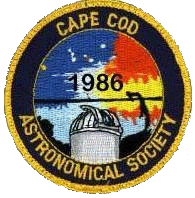

 HYANNIS - (2/25/10) Two years ago, Kelsie Krafton took her first physics class. Now, she's
discovering asteroids and soaring toward a career in astrophysics.
HYANNIS - (2/25/10) Two years ago, Kelsie Krafton took her first physics class. Now, she's
discovering asteroids and soaring toward a career in astrophysics.
As a then-sophomore at Sturgis Charter Public School in Hyannis, Kelsie breezed through her first physics class. She was bored by how easy it seemed. But one day, she flipped on a television show about astrophysics and was hooked.
"It kind of added a whole new dimension to the subject," she said of viewing astrophysics as filled with adventure and exploration. Kelsie decided she wanted to pursue a career in the field.
This week, the 17-year-old Falmouth resident received official word that she's discovered two asteroids through a global space exploration project. The International Astronomical Search Collaboration, a network of research institutes and science laboratories, confirmed that the high school senior had found two new asteroids.
The program's founder, Dr. Patrick Miller of Hardin-Simmons University in Abilene, Texas, e-mailed Kelsie's Sturgis math teacher, Randy Carspecken, with the news.
Kelsie, who submitted her asteroid findings on Valentine's Day, found out about the accomplishment when she checked her laptop Tuesday night. She ran around her family home in celebration. "This is something (she'll) never forget," Carspecken said of the discovery.
Kelsie started searching for asteroids last year, under the supervision of Carspecken. She recently finished her senior project related to the search, delving further into the intricacies of the astrophysics project's math and physics.
Each year, about 240 schools worldwide, ranging from middle school to college, participate in the search for asteroids and other objects that could be even closer to Earth, Miller said. About 150 asteroids are discovered through the program each year, he said. Students participating in the International Astronomical Search Collaboration receive images of taken from a private astronomical observatory in Illinois. Using a software program, several images taken of the same sector in space are studied. Students search for moving objects that could be asteroids. They measure an object's position in terms of time and the level of the object's brightness, Miller said. "They are actually doing research for the field that is important for the field of astronomy," he said.
After an asteroid is discovered, the information is eventually provided to the Harvard University-affiliated Minor Planet Center in Cambridge.
Kelsie discovered two asteroids that are somewhere "between the orbits of Mars and Jupiter," Miller said. They are roughly two to four times farther away from the Sun than Earth is from the Sun, he said. The asteroids have been named "2010 CK141" and "2010 CM141".
Within six years, researchers may be able to pin down a more specific location for Kelsie's asteroids. Once a new asteroid's location is narrowed down, the original discoverer can name it. Kelsie said she may add her initials to her asteroids' names if given the opportunity.
The Sturgis senior said she'll narrow down her astrophysics aspirations in college. But in the meantime, she's enjoying her search of the night sky with counterparts around the world. "I love that I discovered an asteroid the same time someone from Italy is discovering an asteroid," she said.